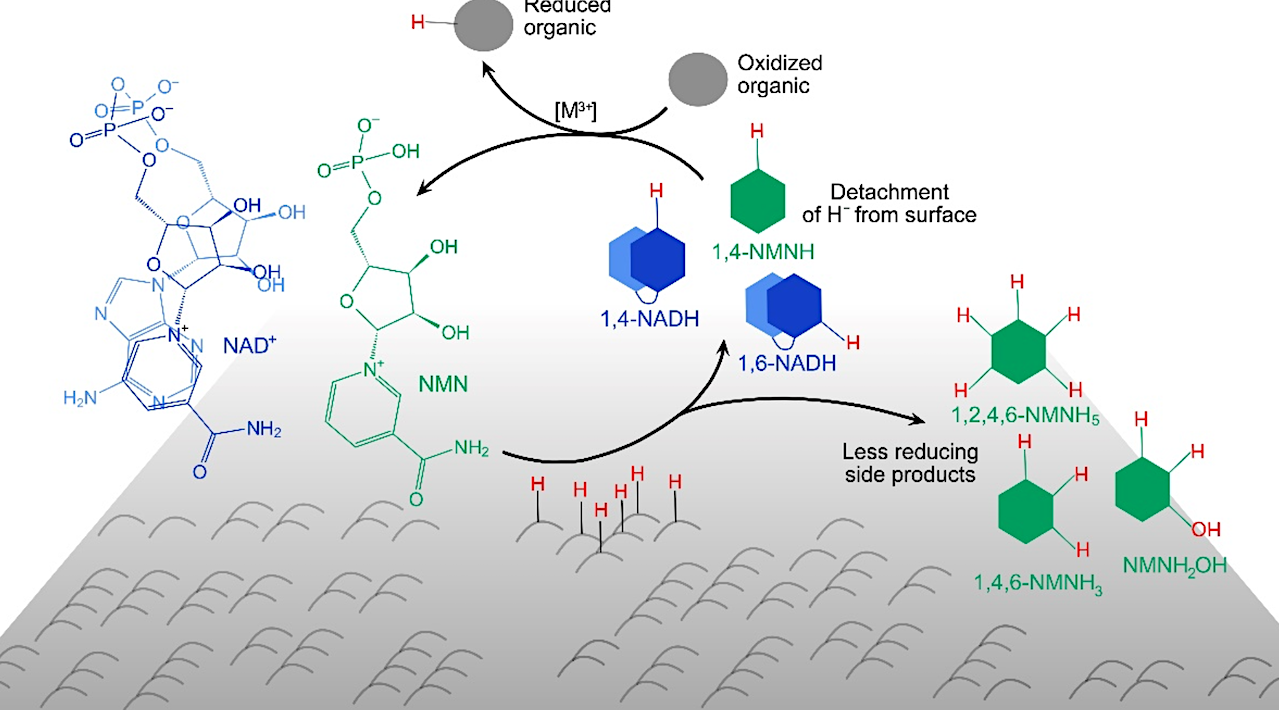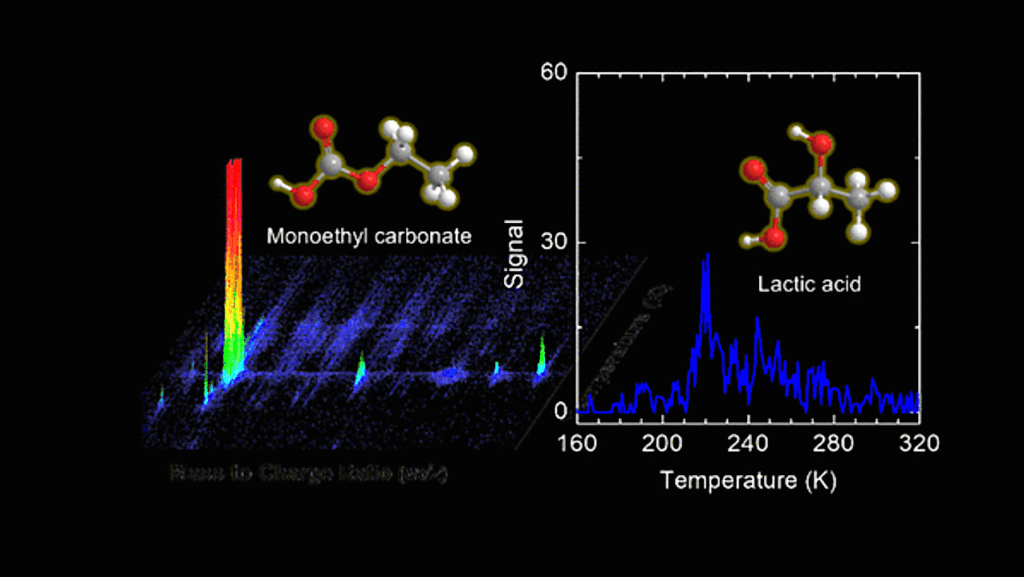Reduction Of NAD and NMN On Mineral Surfaces With H2 Reveals A Functional Role For The Adenosine Moiety In Prebiotic Evolution

Many cofactors share a molecular structure – adenosine – that otherwise occurs in nucleic acids. The presence of adenosine in cofactors has presented an evolutionary puzzle.
Is it a biochemical ‘handle’ that allows proteins to bind the cofactor more tightly, or is it a relic from a time when cofactors arose from the building blocks of genes? Using the example of nicotinamide adenine dinucleotide (NAD), we find a surprising and previously unknown property of its adenosine monophosphate (AMP) handle.
Reduction experiments with hydrogen gas (H2) on mineral surfaces show that the handle-free nicotinamide mononucleotide (NMN) overreduces quickly, while NAD gets reduced specifically.
The AMP handle allows NAD to function in a hydrothermal, mineral-based setting, indicating that it is a form of protection against a harsh chemical environment in which biochemistry and life arose.
Our findings uncover a specific functional role for the AMP moiety of NAD under environmental conditions capable of nonenzymatic NAD reduction, thereby identifying a structural element of a redox cofactor that is older than the enzymes that use it.
Reduction of NAD and NMN on mineral surfaces with H2 reveals a functional role for the adenosine moiety in prebiotic evolution, Research Square (open access)
Astrobiology,








